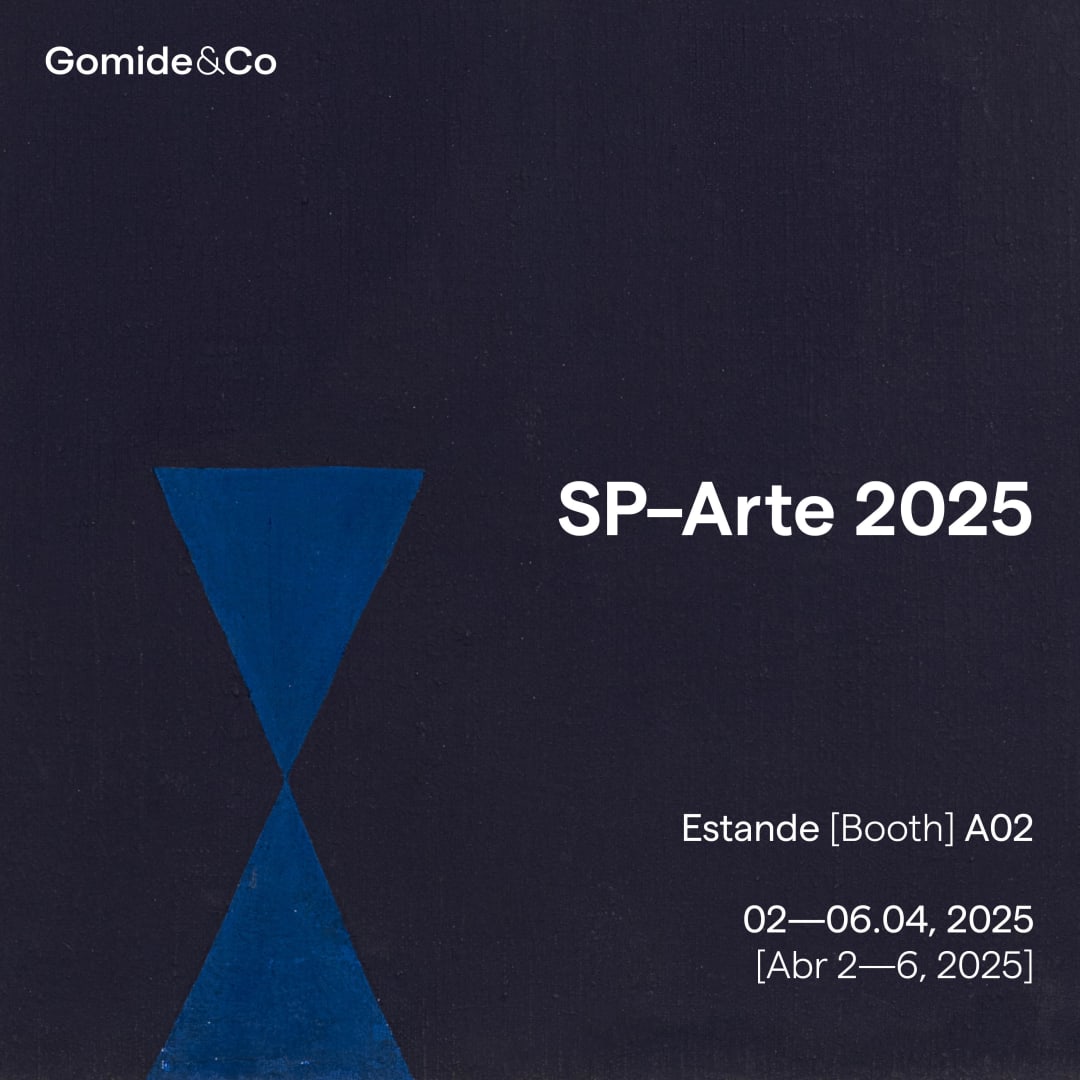For the 21st edition of SP-Arte, Gomide&Co is presenting a selection of works based on the visual dialog between the various forms of abstraction that mark Latin America, moving between the geometric and the organic with an emphasis on aspects and elements present in the culture and identity of the region and which reverberate in other parts of the world. The relationship with the land and with traditional practices is a central axis of the proposal, in which the selection pays special attention to the world of ceramics, among other manual practices, such as tapestry. The exhibition project is by the architecture studio entre terras (Jaqueline Lessa), with furniture designed by Lucas Recchia.
The selection is based on ceramics produced by the Nazca (100 BC – 800 AD) and Moche (100 – 700 AD) cultures, both located in the Andes region, combined with artists who have developed their work in dialogue, direct or otherwise, with traditions considered non-hegemonic in the modern and contemporary art circuits. These artists include Eduardo Chilida (Spain, 1924–2002), a Basque by origin, whose sculpture and printmaking output is marked by a tension between the organic and the geometric. From the 1970s onwards, while living in France, Chilida developed a series of works called Lurra (earth), in which he used the chamotte clay he came into contact with there.
Also a highlight is Megumi Yuasa (Brazil, 1938), who is presenting an all new sequence of ceramic sculptures from her tree series especially for the project. A nostalgic reference to the fig tree that marked her childhood, the works vary in small and medium scales and feature earthy tones that relate to the gradient of colors offered by the clay. Maria Lira (Brazil, 1945) also stands out in the selection with new works from her series Bichos do sertão, paintings with mineral pigment of imaginary animals that make up a vast formal bestiary and reflect the diversity of earth colors in the sertanejo landscape.
Reminiscences of childhood are also present in the sculpture Femme (2004), in which Louise Bourgeois (France, 1911 – USA, 2010) revisits her famous series of drawings Femme Maison (1946-47). In this case, the artist creates a new sculptural language based on operations that run through her family history—the acts of cutting, sewing and upholstering—presenting a creature made of scraps of fabric, with apparent seams, which oscillates between figuration and the shapeless. Sewing and embroidery are also present in the works of Leonilson (Brazil, 1957–1993) from the 1980s onwards, suggesting playful cartographies that refer to autobiographical aspects and subjective and existential questions.
From the late 1950s to the early 1960s, Mira Schendel (Switzerland, 1919 – Brazil, 1988) developed works that explored the materiality of the line and gesture as a form of expression. By giving a gestural and random dimension to a lexicon of vaguely geometric figures, the artist subverts notions of formal order. At the same time, the artist also began an extensive series of monotypes marked by formal synthesis, where lines and signs reverberate over each other. The selection also includes Adriana Varejão (Brazil, 1964) with a work from the Ruína de Charque series, begun in the 2000s. Inspired by the Baroque tradition and colonial imagery, the artist combines fragments of Portuguese tiles with sculptural volumes that simulate exposed flesh, evoking the brutality of Brazil's colonial history. The work refers to architectural ruins which, when destroyed, reveal a visceral interior, suggesting a mutilated body.
The selection includes: Francisco Brennand (Brazil, 1927–2019); Louise Bourgeois (France, 1911 – United States, 2010); Seyni Awa Camara (Senegal, 1945); Esther Carema (Nivacle Indigenous Community, 1991); Eduardo Chilida (Spain, 1924–2002); Nicolai Dragos (Romania, 1931 – Brazil, 2020); Chen Kong Fang (China, 1931 – Brazil, 2012); León Ferrari (Argentina, 1920–2013); Julia Isidrez (Paraguay, 1967); José Leonilson (Brazil, 1957–1993); Maria Lira (Brazil, 1945); Amadeo Luciano Lorenzato (Brazil, 1900–1995); Antonio Ballester Moreno (Spain, 1977); Nilda Neves (Brazil, 1961); Norberto Nicola (Brazil, 1930–2007); Ediltrudis Noguera (Paraguay, 1965); Abraham Palatnik (Brazil, 1928–2020); Celso Renato (Brazil, 1919–1992); Mira Schendel (Switzerland, 1919 – Brazil, 1988); Shoko Suzuki (Japan, 1929); Tunga (Brazil, 1952–2016); Adriana Varejão (Brazil, 1964); Alfredo Volpi (Brazil, 1896–1988); Megumi Yuasa (Brazil, 1938).











